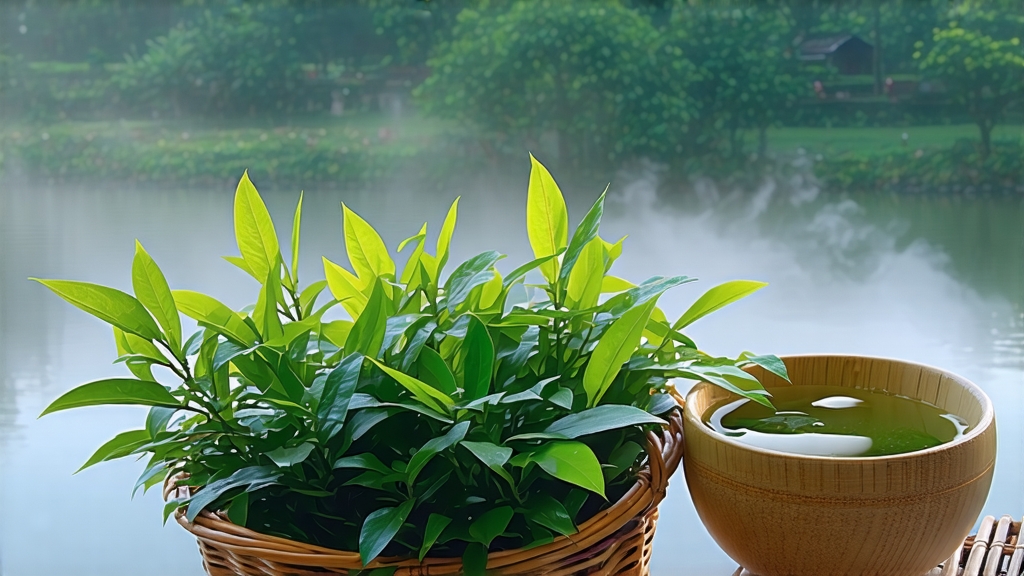
Longjing—romanised as Lung-ching or, more evocatively, “Dragon-Well”—is not merely a green tea; it is a liquid manuscript of Chinese aesthetics, geography and social ritual. To hold a glass of freshly infused Longjing is to peer into the calm surface of West Lake while centuries of poets, emperors and tea monks murmur beneath the steam. This essay invites the international reader to travel from myth to mouthfeel, unpacking why one cultivar from a single province commands the same reverence among Chinese tea lovers that grand cru Burgundy enjoys among oenophiles.
-
Mythic Waters and Imperial Patronage
The name “Dragon-Well” derives from a spring near West Lake in Hangzhou, Zhejiang. Folklore claims that when drought struck in the Ming dynasty, a Taoist priest summoned a dragon living in the well; the grateful creature brought rain and left the water forever sweet. Whether or not one believes in dragons, the spring’s mineral-rich, low-alkaline water remains the benchmark against which all other brewing water is judged. The Kangxi Emperor (r. 1661-1722) first listed Longjing as gong cha—tribute tea—after tasting it on a southern inspection tour. His grandson Qianlong went further: legend says he pocketed several tea shoots while visiting the Lion Peak hills, only to release them later when his mother fell ill; the cured leaves became the palace’s most coveted medicine. By the late Qing, eighteen imperial tea gardens were carved into the slopes, their annual harvests sealed with wax and escorted to Beijing by mounted couriers. The modern Chinese government still designates 800 mu (about 133 acres) of that original micro-terroir as “protected origin,” a status akin to Champagne in France. -
Micro-Terroir: Four Sub-Regions, Four Personalities
Serious drinkers divide authentic West Lake Longjing into four villages, each offering a distinct aromatic sentence within the same paragraph of green tea.
- Shi Feng (Lion Peak): The highest elevation, granite soils, diurnal swings of 10 °C. Tea here is picked latest, accumulating amino acids that translate into a brothy umami nicknamed “chicken-sweetness.” Leaves are jade green with a faint yellow edge, the so-called “ivory crescent.”
- Mei Jia Wu: A broad, south-facing basin where morning mist lingers. Larger temperature buffering yields a rounder, more floral liquor reminiscent of lilac and honeydew.
- Weng Jia Shan: Slate soils plus a natural bamboo forest filter. The tea carries a cool, green-bean snap and a whisper of toasted rice.
- Hu Pao (Tiger Running): Named after the monastery spring where monks once brewed. Proximity to the water table gives the leaf a silken texture and a vanillin finish, almost like fresh hay.
Beyond these four, “Zhejiang Longjing” grown in counties such as Xinchang or Songyang can be excellent, but connoisseurs label it “provincial” rather than “West Lake,” the same way wine lovers distinguish between Napa and simply “California.”
- Cultivars: The Genetic Library Behind the Flavour
Although the phrase “Longjing tea” is legally protected, it refers to a processing style, not a single plant. Three clonal varieties dominate:
- Qunti Zhong (Heirloom Population): Seed-propagated bushes planted before the 1960s. Genetic diversity creates layered aromatics—orchid, fennel, cream—but yield is low.
- Longjing #43: A 1987 cultivar selected for early budding and frost resistance. It delivers the iconic flat, sword-shaped leaf and a bright, spinach-sweet cup. Roughly 70 % of today’s commercial crop.
- Zhong Cha 108: A 2003 release with even higher amino acids and a pronounced chestnut note; favoured for premium gift market.
Each cultivar responds differently to pan-firing temperature, so master craftsmen adjust their wrist choreography accordingly.
- Harvest Calendar: The Race Against Dawn
Quality Longjing is a dawn affair. On the eve of Qingming (early April), alarms ring at 3 a.m.; pickers climb the hillside by moonlight so that leaves enter the village workshop before 10 a.m., while overnight dew still guards the cell walls. The standard is “one bud and one immediate leaf,” roughly